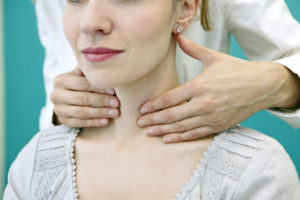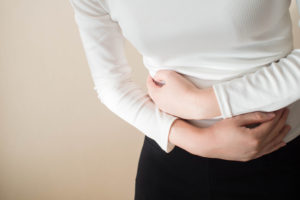
In the new reality, you have probably been spending more time working from home—maybe even pulling longer work hours. Whether you work from home or a shared office, you should keep in mind the following ergonomic workspace tips and tools to help you achieve good body posture.
Body Awareness
- Be conscious of what your body is telling you. It doesn’t matter if you’re working from a desk, on the dining table, or propped up in bed: the basic rule is that your body should not feel discomfort.
- Check on your posture every 15 minutes, as this is the time window in which we start slouching into postures more hurtful to our spine and arms.
- Move around, preferably by getting up and walking around, every 30 to 40 minutes. Even if you are in a comfortable position, you should not keep the same posture for more than an hour. During these breaks, stretch a little to relieve your muscles and avoid tensing up.
- When you are looking down on your laptop screen, avoid tilting your head. Instead, look down with your eyes or prop your screen up to eye level.
- If you need to be on the phone while working, start using a headset. Avoid holding up the phone between your ear and shoulder, use the speaker whenever possible, and remember to hold your phone with your dominant hand.
Tools and Devices
- Though a laptop stand is ideal, if you cannot have one to bring your screen up to eye level, use a pile of books or a wooden crate—they can be just as good!
- You may spend hours holding a mouse or using a laptop touch pad, which can put tension on the palm of your hand, your fingers, and even your arm. Try using a mouse that fits comfortably under your hand and is fast to respond.
- Though wireless keyboards are more convenient, you may want to consider one that can do both. This would give you the flexibility to change posture, move further away from your screen, or hold the keyboard a different way. If you are working exclusively on a desk, think of adding padding to the front end of your keyboard to relieve pressure on your wrists.
Standing Desks
- Studies suggest that use of a standing desk creates an ergonomic workplace that reduces the risk of shoulder and back pain, as well as obesity, diabetes, and cardiovascular disease. If you are considering a standing desk, your budget is better off with some DIY ideas, such as the IKEA option.
- It is optimal for standing desks to be height adjustable, so purchasing an inexpensive IKEA side table to prop up on your regular desk would bring the screen up to eye level. Additionally, a shelving unit can act as a keyboard stand that will be right at your fingertips! To learn more, check out this articleon how to build an IKEA standup desk for $22.
More
 What is it?
What is it?
A urinary tract infection (UTI) is an infection that takes place in the urinary system and can appear at any part of it, including your kidneys, uterer, urethra, and/or bladder. The lower urinary tract, which includes the bladder and the urethra, is most at risk for becoming infected. While the upper tract, where the kidneys and uterer are located, may also get infected, these are usually more severe infections. A UTI is one of the most common infections, and it is usually caused by microbes—mostly bacteria.
What causes it?
UTIs happen when bacteria enter the urinary tract through the urethra and multiply in the bladder. Although our bodies usually keep out microbe invaders, sometimes this does not happen as our defenses may fail. When this is the case, bacteria can grow into a full blown infection in the urinary tract.
The bladder is usually infected by Escherichia Coli (E.Coli) which is a bacteria commonly found in the gastrointestinal tract (GI). It is likely that through this you may develop cystitis, and the likelihood of that increases for women who are sexually active. However, due to female anatomy and the close distance between the anus and the urethra, the risk of cystitis is always present. This also means that the urethra can become infected, as bacteria from the anus may spread to the urethra. Sexually transmitted diseases such as herpes, gonorrhea or chlamydia and mycoplasma may also cause urethritis.
Some UTIs can also be the result of fungi and more rarely by viruses.
What are the symptoms?
You should remember that UTIs don’t always come with symptoms, and the symptoms are different between lower tract infections and upper tract ones.
Upper Tract Symptoms:
- Fever and nausea
- Chills
- Pain in upper back and sides
- Vomiting
Lower Tract Symptoms:
- Strong urge to urinate, usually doesn’t go away
- Burning sensation upon urinating
- Increased frequency of urination without much urine
- Bloody and/or cloudy urine
- Strong-smelling urine
- Pelvic pain in women
- Rectal pain in men
How can I treat it?
The most common way to treat a simple UTI is with prescribed antibiotics, but the type and treatment always depends on the type of UTI and where it’s located.
Simple UTIs are usually treated with drugs such as trimethoprim/sulfamethoxazole, Fosfomycin, Nitrofurantoin, cephalexin or ceftriaxone. Symptoms may clear up in the first few days of taking the antibiotic, but you may need to continue it for a week or more. You should always follow your doctor’s orders on taking the antibiotics and take the full course as prescribed.
Upper tract UTIs and long-term infections will most likely require different treatments, and even though there are some preventative measures you can take for UTIs, there are no home remedies that can fully treat them.
To prevent UTIs, it is suggested that you have a high water intake and drink plenty of liquids. You can also drink cranberry juice, though studies have no conclusive evidence that cranberry juice alone prevents UTIs. You should also empty your bladder soon after intercourse, and always wipe from front to back to eliminate the chance that GI bacteria will reach the urethra. You should also avoid potentially irritating feminine products and consider changing your birth control method—especially if it is a diaphragm or unlubricated condoms as those contribute to bacterial growth.
More
Although it might be surprising, the American Academic of Pediatrics (AAP) has evidence that common allergies, such as peanuts, can be prevented with the early introduction of foods to an infant’s diet. The two known factors are nutrition can play a role in preventing or minimizing allergies and that children can be predisposed to allergies based on family history.
As such, the AAP suggests that there is no reason to not introduce common allergens in a child’s diet early on, as you would introduce any other food and nutritional source. Early peanut introduction into an infant’s diet, in infant-safe forms after other solid foods are introduced, is also suggested and for further information you can consult the guidelines developed by the National Institute of Allergy and Infectious Diseases (NIAID), which is endorsed by the AAP.
Common allergens found in eight major groups of food are responsible for approximately 90% of all food allergies.
- cow milk
- eggs
- fish
- crustacean shellfish
- tree nuts
- peanuts
- wheat
- soybean
General guidelines prompt parents and caretakers to slowly introduce the eight major food groups to the infant’s diet when he/she has already tolerated solid food. The first taste should be at home, and you can gradually increase the intake over a span of three to five days if no reactions occurs.
In addition to the suggestion of introducing foods that are known to have common allergens, the AAP is currently researching the correlation between the prevention of food allergies through the introduction of allergenic foods in the infant’s diet and maternal diet, breastfeeding, and hydrolyzed formulas. So far, the major finding that concerns most mothers is that restricting your diet during pregnancy or when breastfeeding does not seem to be related to preventing allergies in infants. Similarly, according to research, the use of hydrolyzed formula does not prevent allergies, even in infants and children who are at high risk for allergic disease.
Despite the new research findings, and the new dietary suggestions, it is always advisable to consult with your child’s doctor (pediatrician or allergist) about the symptoms of allergies and whether or not your child ought to be tested.
This is especially important if your child has already had an allergic reaction to a food, has a known food allergy, or a positive blood test to foods. If your child has a sibling that has exhibited a peanut allergy, be careful on how you introduce allergens into the diet, as well as if your infant has persistent eczema that does not improve with treatment.
If your infant has moderate to severe eczema which is being treated with prescription medication or an egg allergy, then they are at high risk for other food allergies and testing for peanut allergy should be prioritized, and the introduction of any foods containing peanuts in their diet should be closely monitored, even though this introduction can start taking place as early as four to six months of age.
More
What is it?
Endometrial ablation is a procedure, not a surgery, that removes the lining of the uterus to reduce or stop menstrual flow completely. Most types of endometrial ablation take place in your doctor’s office, using topical anesthesia. Some types of endometrial ablation may require total anesthesia, in which case they are performed in the hospital. It does not require an incision to be made, as your healthcare provider inserts small tools through your vagina to reach your uterine lining.
There are different methods for this, some of which include:
- Use of an electric current that travels through a wire loop
- Heated fluids that are pumped into the uterus to destroy the lining
- Radio waves, which are sent into the uterus through an electrical mesh your provider expands
- Application of very cold temperature using a probe to freeze the lining
- Microwaves sent in the uterus through a thin probe
Why is it done and who needs it?
The main reason for endometrial ablation is experiencing excessive blood loss during menstruation—to the extent where you need to change your tampon or pad every hour. Another reason can be abnormally long periods that last more than eight days or experiencing bleeding in between periods.
Typically, when your menstrual bleeding needs to be reduced doctors will usually either prescribe medications or an IUD. If these options don’t have the expected results, endometrial ablation is considered as an option.
Risks
Although complications in endometrial ablation procedures are rare, they may include pain, bleeding, or even infection. Possible injuries to nearby organs are also possible, either because of the hear or cold used, or because of the surgical instruments.
Another possible complication is a higher risk pregnancy. Even though pregnancies can occur if you have undergone endometrial ablation, you want to closely monitor your pregnancy, especially as it may lead to an ectopic pregnancy or even miscarriage.
In Preparation
It cannot be performed if you are pregnant or if you have IUD in place. Perhaps more rare but significant is that you will be tested for cancer through a small sample of your endometrium.
The endometrial ablation works best if the uterine lining is thin, so you might either be prescribed medication for that, or your doctor might perform a procedure where they scrape off the extra tissue—known as dilation and curettage.
Particularly important is to discuss anesthesia options with your doctor beforehand, as some methods require general anesthesia, while others can be performed with sedation or numbing shots.
After the Procedure
The results of the procedure may take a few months to become visible, and they differ among women: some may experience lighter periods, while others may notice their period stopping completely.
You may experience different reactions right after the procedure, which include menstrual-like cramps that can be soothed with over-the-counter medication, vaginal discharge that will most likely be present the first few days after the procedure, as well as frequent urination within the first 24 hours.
More
 Most women who keep tabs on issues related to women’s health have likely heard of diseases associated with the thyroid, a small gland at the base of your neck which is part of the endocrine system that produces hormones. Thyroid disorders can arise when your thyroid gland produces too much (hyperthyroidism) or not enough hormone (hypothyroidism). Common thyroid gland disorders include Hashimoto’s disease, Graves’ disease, goiter, and thyroid nodules.
Most women who keep tabs on issues related to women’s health have likely heard of diseases associated with the thyroid, a small gland at the base of your neck which is part of the endocrine system that produces hormones. Thyroid disorders can arise when your thyroid gland produces too much (hyperthyroidism) or not enough hormone (hypothyroidism). Common thyroid gland disorders include Hashimoto’s disease, Graves’ disease, goiter, and thyroid nodules.
What is it?
One of those diseases, Hashimoto’s results in an under-active thyroid gland (hypothyroidism). It is an autoimmune condition that mostly affects women between the ages of 40 and 60.
Who gets it?
Even though middle-aged women are the best candidates for Hashimoto’s diseases, there is nothing that prevents it from showing up in younger women, men, or even children. You are at high risk of getting it if it runs in your family, as it is hereditary, or if you have another autoimmune disease—such as Type 1 diabetes, lupus, or rheumatoid arthritis.
People who have been exposed to high levels of environmental radiation are also more likely to develop Hashimoto’s diseases. Of course, you are in the highest risk bracket if you have already had some type of thyroid surgery.
Symptoms
Sometimes the symptoms of Hashimoto’s disease can go unnoticed for years. The first sign can be an enlarged or swollen thyroid, usually combined with unexplained weight gain, prolonged and/or heavy menstruation, fatigue and depression, sensitivity to cold, constipation, hair loss and brittle nails, muscle weakness and joint pain, and even memory lapses.
Treatment
Since Hashimoto’s is a disease that affects the production of hormones in your body, it is usually treated with daily hormone intake—levothyroxine, the hormone that your thyroid gland would normally produce. In this way, the level of thyroid stimulating hormone (TSH) will slowly start to stabilize. Hormonal intake can take a long while to act in the body, so it may be several months before the symptoms begin to wane.
Consult your doctor in case your dose needs to be adjusted as your TSH levels can change due to pregnancy, heart disease, or if you take menopausal hormone therapy.
More

Many women experience pain during intercourse at some point in their lives. There can be many reasons for this, including physical conditions that can be treated, structural issues in the reproductive organs, and even psychological concerns. It is quite a common problem, and its medical term is dyspareunia. The pain can either be intermittent or persistent and may happen before, during, and even after intercourse.
Some of the symptoms of dyspareunia include pain at the time of penetration, and this can also be when inserting a tampon, deeper pain experienced during thrusting, a sensation of burning, and even pain that last for a long time after intercourse, usually throbbing.
Though the symptoms might be similar between women, the cause of this discomfort and pain is most often diagnosed depending on the type and timing of the pain.
Entry Pain
This occurs at the time of penetration and may be the result of the following reasons.
- Lack of lubrication: This is either due to limited foreplay or due to decreased estrogen levels (usually after menopause or childbirth). Certain medications are also known to cause problems in arousal.
- Inflammation or infection: If your genital area or urinary tract is inflamed, or even infected, this can cause painful intercourse. Another factor may be chronic skin conditions, such as eczema.
- Injury or irritation: If you have had an accident that affected your pelvic area or a surgical procedure in your genital area, this may be affecting how you experience intercourse.
- Structural abnormalities: In cases of problems presented at birth, such as a not-fully formed vagina or the development of a hymen that blocks the vaginal opening, you will most likely experience pain during sex.
- Vaginismus: Sometimes the vaginal muscles involuntarily spasm, which can result in painful penetration.
Deep Pain
This is most likely to be experienced with deep penetration or thrusting. It is possible that certain positions worsen this kind of pain.
- Certain medical conditions: If you know you are experiencing a medical condition or you have this kind of pain during intercourse, the following can be pain-causing factors: endometriosis, pelvic inflammatory disease, uterine prolapse, retroverted uterus, uterine fibroids, cystitis, irritable bowel syndrome, hemorrhoids and ovarian cysts.
- Surgeries and other medical treatments: If you have had pelvic surgery, including hysterectomy, there might be scarring in the area that causes pain. Cancer treatments such as chemotherapy and radiation can also contribute to this.
Emotional Pain
It is widely known that emotions are deeply connected with sexual activity, and they can have a direct effect on how individuals experience intercourse and/or heavily affect the emotional component of sex.
- Stress: One of the most common psychologically charged situations many individuals experience. A common response of female bodies to stress is the tightening of pelvic floor muscles, which can lead to painful intercourse.
- Psychological issues: Though not causing as direct a response as stress, issues of anxiety, depression, relationship problems, and possible fear of intimacy heavily contribute to a low level of arousal, resulting in limited natural lubrication, discomfort, and pain.
- History of sexual abuse: If you have experienced sexual abuse, this most definitely can play a role in the emotional, and possibly physical, pain you may be experiencing during sex.
If you are experiencing pain during sex you should consult your doctor as the causes vary, and each person should receive treatment tailored to their needs.
More

Surely you have heard about the benefits of exercising and the “rest and relaxation” many medical professionals prescribe. So how are the two connected? What is the benefit of trying to fit physical exercise in a full schedule?
Exercise can actually help lower your stress levels—and you don’t need to be a professional athlete for that to happen! The so-called “runner’s high” that people experience after lengthy exercise can also be achieved by simple, less vigorous exercises, including walking, swimming, yoga, and cycling.
When we get moving, our body starts producing endorphins. These are chemicals made primarily in the hypothalamus and pituitary glands that relieve stress and pain. Though natural levels of endorphins vary from person to person, movement and exercise activate our brain’s feel-good neurotransmitters and start battling stress. Focusing on a single task for a specific period of time, and a task that activates your feel-good chemicals at that, will result in you having more energy, being more optimistic, and it will also relax you.
Long-term benefits of exercising:
- boost your mood, happiness, and self-confidence
- improve your sleep
- work out daily tensions
- enhance your ability to focus on one task at a time
- decrease the symptoms associated with mild depression and anxiety
If you have a full and busy schedule, it can be difficult to carve out time for exercise. However, it doesn’t take much for your endorphins to get kicked into gear. Pencil in a bit of time on a regular basis and focus on an exercise that works for you and your schedule. You will notice that the more you devote your attention to your body’s movements and physical activity, the more you let go of daily stress, anxiety, and irritation.
Ideally adults should aim for 150 minutes of exercise each week. Essentially, this means around 30 minutes per day, five days a week. Exercise is possible without a gym membership, as walking and biking are some great ways to get moving. If you are stuck inside due to colder winter weather, consider trying yoga or aerobic videos. Investing in an elliptical or treadmill may also be a good idea for those in cold-weather climates. Tracking and monitoring your progress is key to reaching goals—so consider buying a planner/calendar or finding a phone app system that works for you.
So why not take the chance with the new calendar year to try out a new habit? Start slow, regularly devote some time to exercise and start noticing how your stress is becoming less while your optimism and concentration strengthens.
More

What is it?
An Extraperitoneal C-Section (ECS) is a surgical procedure of delivering a baby through an incision in the lower uterine segment. In ECS, the uterus is approached through the paravesical space and the peritoneal cavity is not entered. The main advantage of this procedure is that it is less invasive, as it helps prevent the spread of infection from the uterus into the peritoneal cavity. Since it is less common than the traditional C-Section, Extraperitoneal C-Section surgery requires focused training and specialization.
What are the benefits?
In addition to lessening the spread of infection to the peritoneal cavity and being less invasive on tissue, ECS resembles a natural birth experience. A few hours after the operation, the mother can get up and walk independently, and the use of a urinary catheter is not necessary. She can shower the same day and eat normally, as the ECS procedure comes with reduced post-operative pain.
ECS is also a good alternative to transperitoneal delivery or cesarean hysterectomy if there is a case of a uterine infection—whether that is proven or presumed.
ECS, overall, presents a lower risk of complications than the traditional C-Section and has the added advantage of reduced postoperative pain. As a result, both the time of recovery and the cost of the procedure are relatively low; many mothers can be discharged in less than 24 hours and because of the short stay in the hospital and the reduced use of analgesics they are not faced with a huge birth cost.
What are the risks?
Studies have concluded that there are no significant risks associated with ECS. Although it is a procedure meant to reduce the risk of infection, we should remain aware that post-operative infections may still occur—even if we have a large number of antibiotics available at our disposal. The studies done to compare ECS to traditional C-Section methods showcase that there is no significant difference in morbidity and mortality rates between the two, but they do seem to be suggesting that ECS is a lengthier procedure—despite the reduced post-operative time.
How common is it and what makes someone a good candidate?
Not all OBGYNs are trained to perform ECS; though it is a procedure that presents a rational basis to prevent infections and has benefits in anatomic training, it still requires extreme specialization to be carried through. As such, if there is evidence of an intrauterine infection or if one is presumed, this makes ECS a good solution. Similarly, it is viable in cases of labor over 24 hours, ruptured membranes over 24 hours, as well as six or more vaginal examinations.
We are proud to provide our patients with the very best in treatment methods to help ensure a new generation of Western New York babies is brought into this world safely. For women who may require a cesarean section, your OBGYN will help you determine if an extraperitoneal cesarean is right for you.
If you have questions about Extraperitoneal Cesarean Surgery available from our practice, and whether it may be appropriate for you, contact us today.
More

Ovarian cysts are fluid-filled sacs—like any cyst that can form anywhere in our body. They can be found in the ovaries or on their surface. They are usually harmless and are not treated with medication as they go away on their own.
Most common types of cysts:
Follicle Cysts: Formed during ovulation, as ovaries prepare to release the egg; the egg grows inside a follicle, which is a tiny sac. When the egg is ready, the follicle opens to release it. However, if the follicle doesn’t break open, then it continues to grow and becomes a follicle cyst.
Corpus Luteum Cysts: After a follicle has released the egg, it usually shrinks back to its normal size and produces hormones for the next menstrual cycle. At this stage, it’s a mass of cells called corpus luteum. It is possible that the corpus luteum will not shrink once it releases the egg, in which case it builds up fluid and becomes a cyst.
Polycystic Ovary Syndrome: This occurs when there are many small cysts found on the ovaries, which can potentially cause problems with getting pregnant.
Cystadenomas: Formed on the surface of an ovary and may be filled with a watery or mucous fluid; they can sometimes become large.
What causes them?
Hormonal Problems: Most cysts form as a result of the menstruation cycle, and they go away on their own after 1-3 months, or in the case of corpus luteum cysts after a few weeks. If you have hormonal problems or use drugs for ovulation, these may cause more ovarian cysts to appear.
Endometriosis: Endometriomas can form as a result of endometriosis, which is a condition causing uterine endometrial cells to form outside the uterus. In this case, the tissue can attach to the ovaries and form a growth.
Pelvic Infection: Severe pelvic infections can spread to the ovaries and fallopian tubes and create cysts.
Pregnancy: Dermoid cysts come from cells present at pregnancy called embryonic cells. They can sometimes contain skin, hair, or teeth and are also called teratomas. However, they are rarely cancerous.
What are the symptoms?
Most ovarian cysts do not create any noticeable symptoms, especially since they form as part of the normal menstrual cycle. However, large ovarian cysts or a cyst that has ruptured may cause:
- Pelvic pain
- Bloating
- Heaviness in your abdomen
- Sudden, severe pain
- Nausea and vomiting
- Pain during menstruation and/or during sex
- Unusual vaginal bleeding
- Needing to urinate more often
More
 New and updated birth control methods seem to be on the rise, so it can be easy to get overwhelmed by the number of choices. When considering your birth control options, it is important to be educated on the numerous options, such as how they fit your lifestyle as well as their benefits and risks.
New and updated birth control methods seem to be on the rise, so it can be easy to get overwhelmed by the number of choices. When considering your birth control options, it is important to be educated on the numerous options, such as how they fit your lifestyle as well as their benefits and risks.
Birth Control Pill
Hormonal birth control prevents pregnancy with a combination of hormones, progesterone, and estrogen that stop ovulation and thicken the cervical mucus to prevent fertilization. It is only available by prescription and must be taken on a daily basis. With correct use, the pill is 99% effective. With actual usage, the pill’s effectiveness is about 91%. The pill’s effectiveness lowers with improper use (not taken every day), the antibiotic Rifampin, the antifungal Griseofulvin, some anti-seizure medicines, and the herb St. John’s Wort.
One key risk of the birth control pill is that it does not protect against sexually transmitted infections, necessitating the use of a condom. Additional potential health risks include blood clots, breast cancer, intermenstrual spotting, nausea, breast tenderness, headaches and migraine, weight gain, mood changes, missed periods, decreased libido, vaginal discharge, and changes to eyesight for contact lens wearers.
Condoms
Condoms are the most commonly used barrier method of contraception in which a physical boundary prevents sperm from entering the uterus and are available over the counter. They contain a reservoir tip to contain ejaculation. Condoms prevent against both pregnancy and sexually transmitted infections, especially HIV, gonorrhea, chlamydia, and trichomoniasis; they are also associated with a lower rate of cervical cancer, which is associated with HPV.
However, condoms are not 100% effective at either pregnancy or disease prevention. The success rate of condoms at pregnancy prevention is 14% to 15%. With typical use, the reduction in the transmission rates of syphilis, gonorrhea and chlamydia, and HIV are, respectively, 29%, 50%, 40%, and 85%. Additionally, some users are allergic to latex, the most commonly used condom material.
IUDs
An IUD is an Intrauterine Device; it is a tiny, T-shaped polyethylene device that is inserted into the uterus and prevents pregnancy by releasing hormones (same as the birth control pill), preventing sperm from traveling to the egg, keeps the fertilized egg from traveling to the uterus, and prevents a fertilized egg by implanting into the uterine wall. IUDs are 99% effective at preventing pregnancy. IUDs can be used for anywhere from 3 to 10 years, depending on the type.
Additionally, they are mostly hassle-free once inserted; users do not have to take a daily pill or use a condom with each instance of intercourse. Like hormonal birth control pills, IUDs do not prevent sexually transmitted infections. Also, some IUDs may make periods heavier and cramping worse. While pregnancy with an inserted IUD is very unlikely, it raises the risk for miscarriage, infection, ectopic pregnancy, and early labor and delivery. IUDs also can cause ovarian cysts and pelvic inflammatory disease.
More










